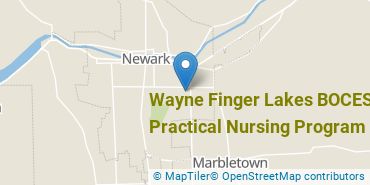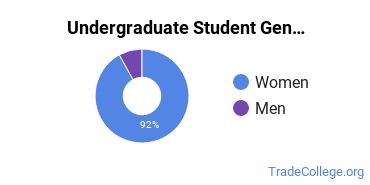Wayne Finger Lakes BOCES-Practical Nursing Program Trade Programs
Located in Newark, New York, Wayne Finger Lakes BOCES-Practical Nursing Program is a public institution. Newark is a great place for students who enjoy small town life.
Featured schools near , edit
Where Is Wayne Finger Lakes BOCES-Practical Nursing Program?

Contact details for Wayne Finger Lakes BOCES-Practical Nursing Program are given below.
| Contact Details | |
|---|---|
| Address: | 131 Drumlin Ct, Newark, NY 14513-1863 |
| Phone: | 315-332-7374 |
| Website: | www.wflboces.org |
Can I Afford Wayne Finger Lakes BOCES-Practical Nursing Program?
Student Loan Debt
Almost 66% of college students who graduated with the class of 2018 took out student loans, but that percentage varies from school to school. At Wayne Finger Lakes BOCES-Practical Nursing Program, approximately 67% of students took out student loans averaging $7,608 a year. That adds up to $30,432 over four years for those students.
Wayne Finger Lakes BOCES-Practical Nursing Program Undergraduate Student Diversity
Gender Diversity
Of the 143 full-time undergraduates at Wayne Finger Lakes BOCES-Practical Nursing Program, 10% are male and 90% are female.

Racial-Ethnic Diversity
The racial-ethnic breakdown of Wayne Finger Lakes BOCES-Practical Nursing Program students is as follows.

| Race/Ethnicity | Number of Grads |
|---|---|
| Asian | 3 |
| Black or African American | 45 |
| Hispanic or Latino | 9 |
| White | 72 |
| International Students | 0 |
| Other Races/Ethnicities | 14 |
Wayne Finger Lakes BOCES-Practical Nursing Program Trade School Concentrations
The table below shows the number of awards for each concentration.
| Major | Undergraduate Certificate | TOTAL |
|---|---|---|
| Licensed Practical/Vocational Nurse Training | 38 | 38 |
| TOTAL | 38 | 38 |
References
*The racial-ethnic minorities count is calculated by taking the total number of students and subtracting white students, international students, and students whose race/ethnicity was unknown. This number is then divided by the total number of students at the school to obtain the racial-ethnic minorities percentage.
More about our data sources and methodologies.
Featured Schools
 Request Info
Request Info
|
Southern New Hampshire University You have goals. Southern New Hampshire University can help you get there. Whether you need a bachelor's degree to get into a career or want a master's degree to move up in your current career, SNHU has an online program for you. Find your degree from over 200 online programs. Learn More > |
